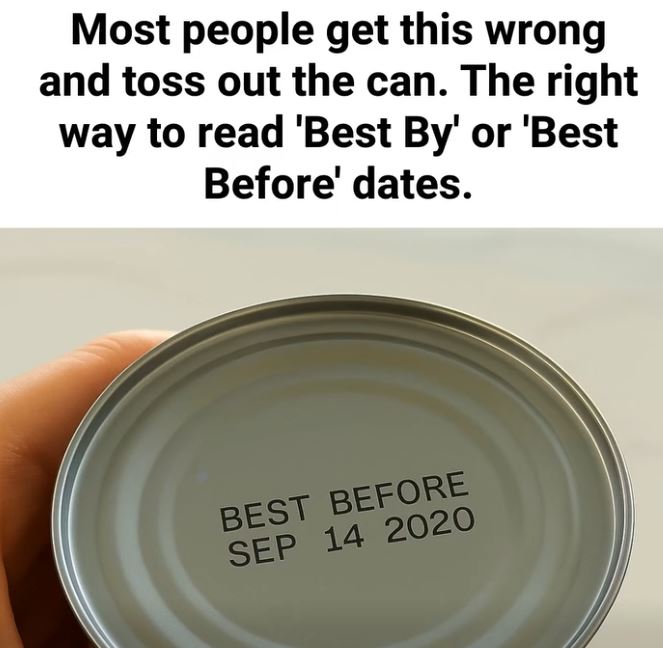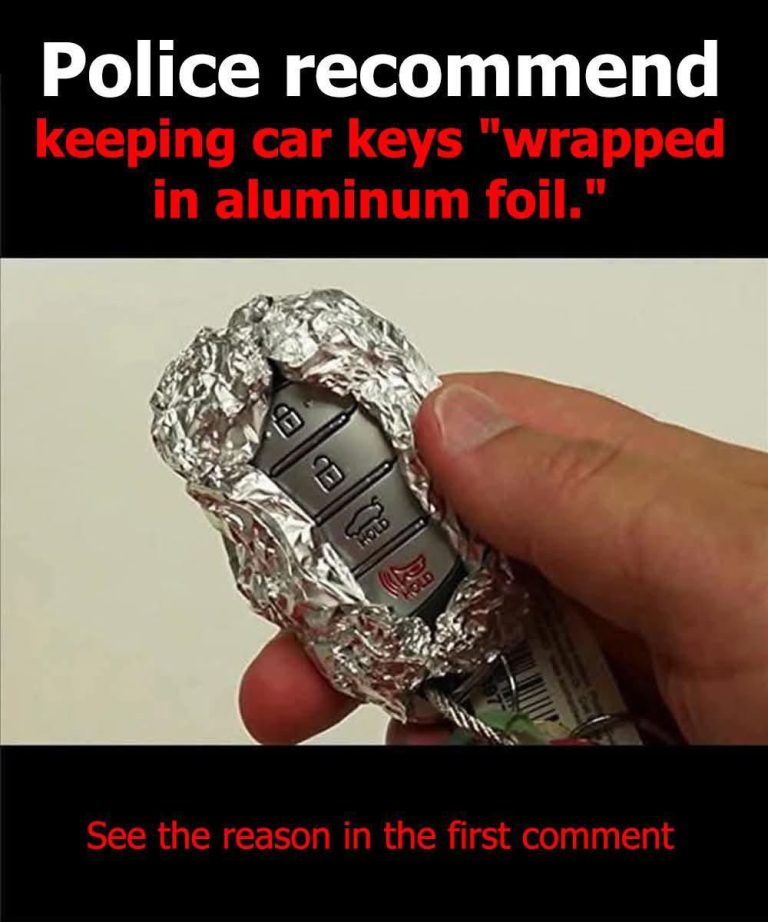
(How to Tell If That Old Can in Your Pantry Is Still Safe to Eat)
We’ve all been there — digging through the back of the pantry, only to find a dusty can of soup, beans, or peaches that expired a year (or three) ago. You pause, turn it over in your hands, and wonder: “Is this still safe to eat?”
Canned food is famous for its long shelf life, but long doesn’t mean forever. While the date on the can might not always spell danger, there are key signs and safety checks you should never ignore.
Let’s take a closer look at what happens when canned food expires, what’s safe, and what’s not.
1. Understanding the Dates on Canned Food
Before tossing anything out, it’s important to understand what those printed dates actually mean.
Most canned goods display one of the following:
- “Best By” or “Best Before” — This indicates quality, not safety. The food may lose flavor or texture after this date but isn’t necessarily unsafe.
- “Use By” — This suggests the manufacturer’s recommendation for peak safety and quality.
- “Sell By” — A guide for retailers, not consumers.
So, if your can of tomato soup says “Best By May 2022,” it doesn’t automatically mean it’s spoiled in 2025. But it does mean you should inspect it carefully before deciding to eat it.
2. The Science Behind Canned Food Shelf Life
Canning works by heating food to kill bacteria and sealing it in an airtight container to prevent contamination. When done properly, this process can preserve food for years.
Low-acid foods like beans, meats, and soups can last anywhere from 3 to 5 years (sometimes more), while high-acid foods like tomatoes, fruits, or juices typically last about 1½ to 2 years.
Also Read : The Hidden Effects of Sleeping With a Fan on Your Throat — What You Should Know Before Bedtime
However, over time, even perfectly sealed cans can experience slow chemical reactions that affect flavor, texture, and — in rare cases — safety.
3. When to Toss: Warning Signs of Spoiled Canned Food
Even if the expiration date has passed, some cans may still be safe — but only if they pass the look, smell, and feel tests.
Here’s what you should check for:
- Bulging or swollen can → A red flag for bacterial gas buildup (possibly Clostridium botulinum). Discard immediately.
- Rust or corrosion → Weakens the can’s seal and allows air or bacteria to enter.
- Leaks or sticky residue → Signs of compromised sealing or spoilage inside.
- Dents, especially along the seams → Can damage the integrity of the can and allow contamination.
- Hissing sound when opened → Normal for pressure release, but if accompanied by foul odor or liquid spurting, it’s spoiled.
- Unusual smell or color → Trust your senses — if it looks or smells off, don’t risk it.
Even if you’re unsure, it’s better to err on the side of caution. Foodborne botulism is rare but potentially deadly, and it’s not worth the gamble over a can of beans.
4. What Happens If You Eat Expired Canned Food
In most cases, eating slightly expired canned food just means you’ll experience bland flavor or soft texture — not illness.
But if the can was compromised or contaminated, you risk exposure to Clostridium botulinum, a bacteria that thrives in low-oxygen environments like sealed cans. The toxin it produces can cause botulism, leading to symptoms such as:
- Nausea, vomiting, or abdominal cramps
- Blurred vision
- Difficulty swallowing or speaking
- Muscle weakness
If you suspect botulism, seek medical help immediately. It’s rare but extremely serious.
5. How to Store Canned Food Safely
Proper storage is your best defense against spoilage and contamination — even before the expiration date passes.
Here’s how to keep your canned food in peak condition:
- Store in a cool, dry place — Ideal temperature: 50°F–70°F (10°C–21°C).
- Avoid heat or freezing — Extreme temperatures can cause cans to expand, contract, or crack.
- Keep off the floor — Prevent rust and pest contamination by storing on shelves.
- Rotate your stock — Use the “first in, first out” rule: oldest cans first.
- Label clearly — If the printed date rubs off, write the purchase date with a marker.
6. How Long Past the Date Can You Keep It?
Here’s a general guide to how long canned food stays good after its “best by” date, assuming proper storage and no damage:
| Type of Canned Food | Shelf Life After Expiration |
|---|---|
| Low-acid foods (beans, corn, meats, soups) | 2–5 years |
| High-acid foods (tomatoes, fruits, juices) | 1–1.5 years |
| Canned fish (tuna, salmon, sardines) | 3–4 years |
| Condensed milk | 1–2 years |
| Coconut milk | Up to 2 years |
| Canned sauces or pasta meals | 1–2 years |
These are estimates — always prioritize safety checks over timelines.
7. Safe Alternatives: When in Doubt, Replace It
If you’re unsure, it’s always best to replace old cans. Food waste is unfortunate, but the risk of food poisoning is far worse.
To make your pantry safer:
- Regularly check expiration dates.
- Keep a “cleanout day” every few months.
- Donate extra cans that are still within their safe period to local food banks.
And if you want longer-lasting alternatives, consider freeze-dried or vacuum-sealed foods — they have impressive shelf lives and retain nutrients well.
8. The Bottom Line: Trust Your Senses and Common Sense
Expired canned food isn’t automatically dangerous, but caution is key. Always inspect the can before opening, check the smell and appearance, and never taste food that seems off.
Remember this rule: If it bulges, leaks, rusts, or smells strange — toss it.
That can of peaches from 2019 might still look fine, but peace of mind is worth more than a questionable snack.
So the next time you find yourself holding an expired can, don’t panic — just inspect it carefully, make an informed decision, and stay safe.




1 thought on “Expired Canned Food: Safety Tips and What to Check”